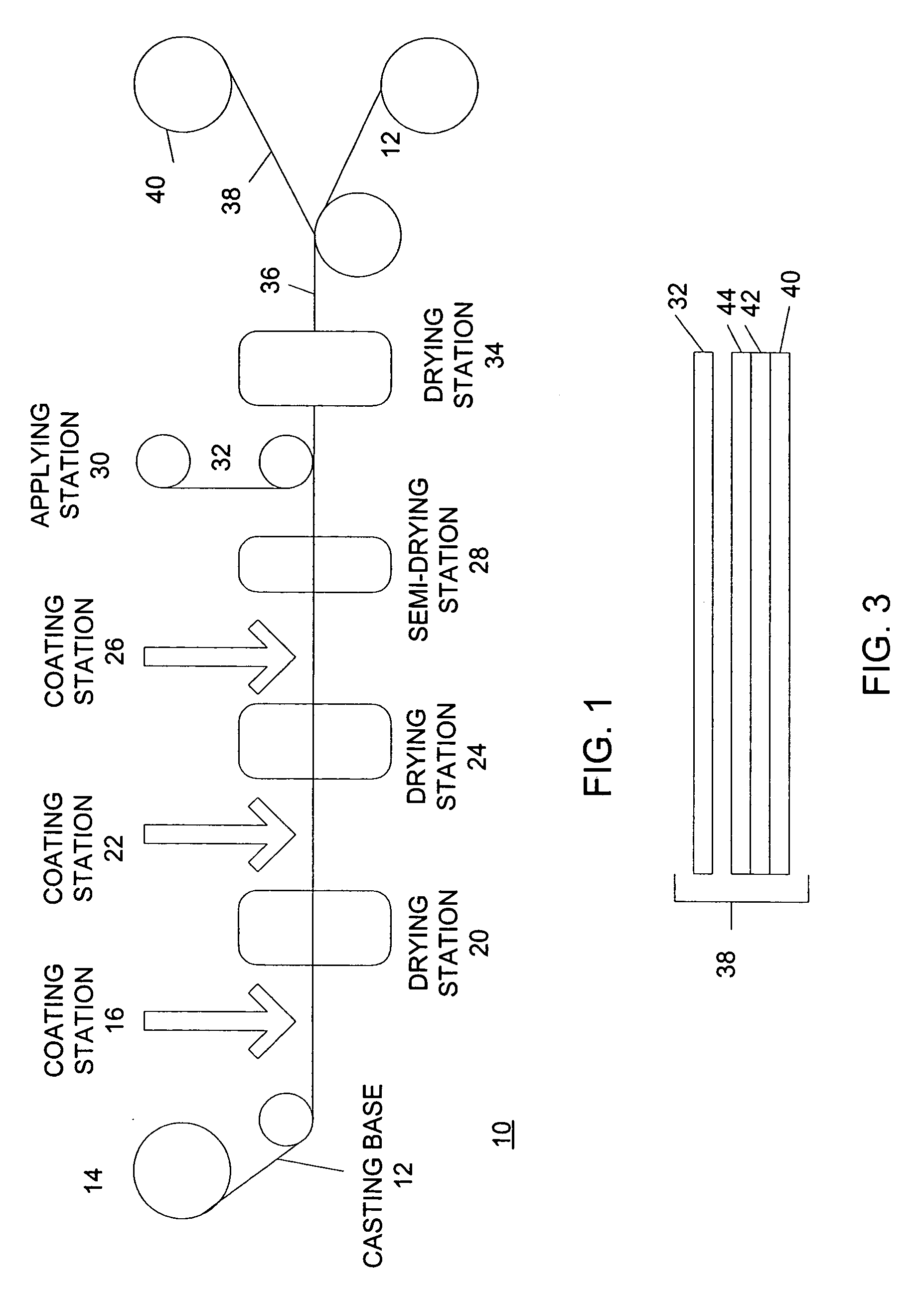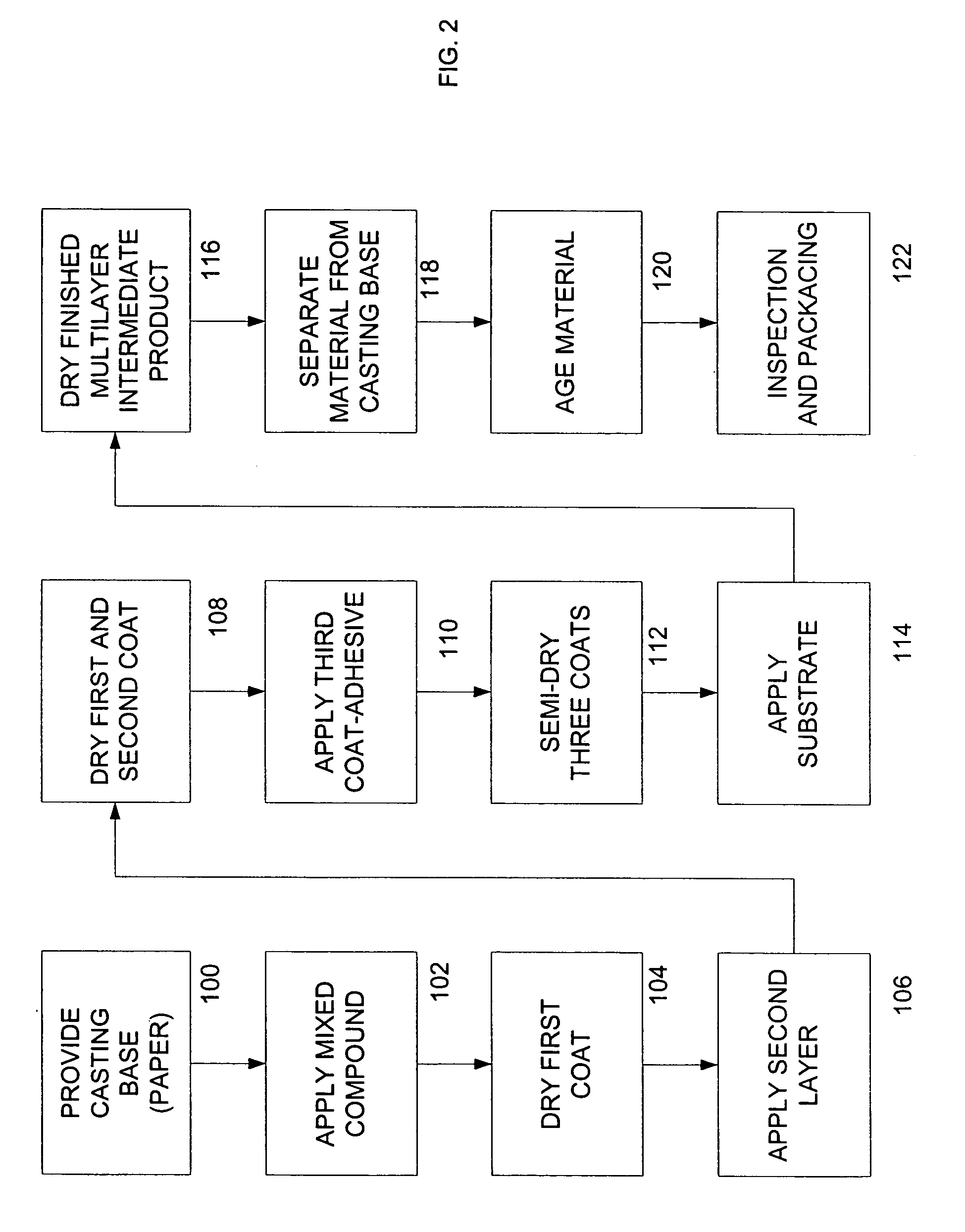Anti-microbial material and method of making the same
a technology of anti-microbial materials and anti-microbial materials, applied in the field of anti-microbial materials and methods of making the same, can solve the problems of reducing immunity, exposing nosocomial areas to uninhibited growth, and lowering immunity, so as to stop cell multiplication and cut off respiration
- Summary
- Abstract
- Description
- Claims
- Application Information
AI Technical Summary
Benefits of technology
Problems solved by technology
Method used
Image
Examples
Embodiment Construction
[0038]FIG. 1 shows an assembly line 10 for making a film in accordance with this invention. It should be understood that the line 10 is provided merely diagrammatically to illustrate the subject process and that the manufacturing process is somewhat more complicated.
[0039] Referring to FIGS. 1 and 2, in step 100, first a casting base (such as paper) 12 is provided on a roll 14. This base 12 is fed to a first coating station 16 where a first coating of a mixed compound is applied (step 102). This mixed compound may be a thermoplastic polymer material such as a polyurethane resin including 3-5% silver ions. The silver ions can be provided in different forms. A preferred form is a silver zeolite. Other forms of silver may be used as well. For example, instead of silver ions, other inorganic antimicrobial materials may be used such as copper-, zinc-, or tin-based materials.
[0040] The resin is preferably a mixture of polyisocyanate, polyether polyol and polyesther polyol. Other polymer...
PUM
 Login to View More
Login to View More Abstract
Description
Claims
Application Information
 Login to View More
Login to View More - R&D
- Intellectual Property
- Life Sciences
- Materials
- Tech Scout
- Unparalleled Data Quality
- Higher Quality Content
- 60% Fewer Hallucinations
Browse by: Latest US Patents, China's latest patents, Technical Efficacy Thesaurus, Application Domain, Technology Topic, Popular Technical Reports.
© 2025 PatSnap. All rights reserved.Legal|Privacy policy|Modern Slavery Act Transparency Statement|Sitemap|About US| Contact US: help@patsnap.com


